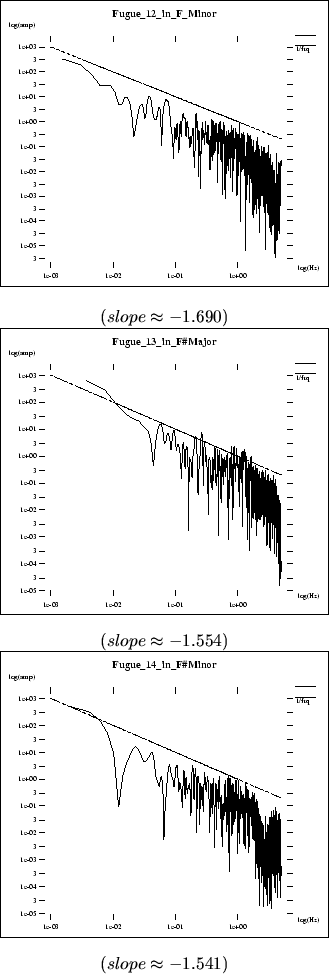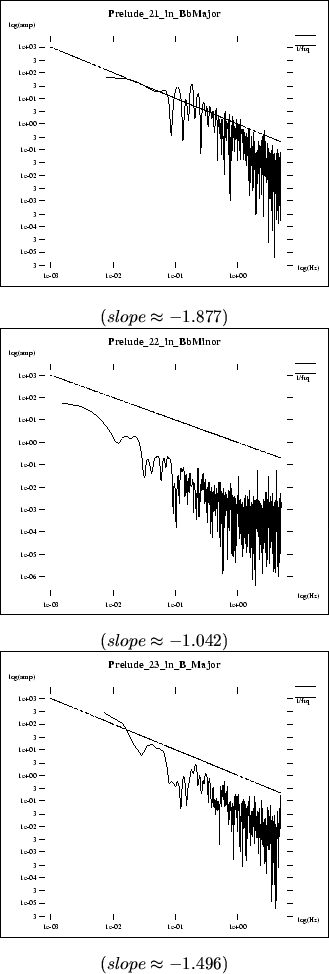



Next: Descriptions of the Audio
Up: Self-similar Synthesis: On the
Previous: Perceptual Issues
Contents
The Slope of Correlated Music
The result of our analysis of 57 different pieces are presented in
this appendix. The third movement of the Brandenburg concerto and all of
preludes and fugues form the Well-Tempered Clavier Part-I, along with a few
other pieces, were analyzed. This analysis was an attempt to recreate the
results of Voss and Clarke's[50] in their study of music
as  noise, which is explained in
chapter 4. In our study we extracted a simple signal
(which we called the ``top voice'')
from the MIDI encoding of these pieces. Our methods of
extraction and analysis are also explained in chapter 4.
A line was interpolated from the data using least squares errorA.1 to
find an approximate value for the slope of the power spectrums[32].
The approximated slope for all the power spectrums is shown. The line
which corresponds to the
noise, which is explained in
chapter 4. In our study we extracted a simple signal
(which we called the ``top voice'')
from the MIDI encoding of these pieces. Our methods of
extraction and analysis are also explained in chapter 4.
A line was interpolated from the data using least squares errorA.1 to
find an approximate value for the slope of the power spectrums[32].
The approximated slope for all the power spectrums is shown. The line
which corresponds to the  (which has a slope of
(which has a slope of  )
spectrum is also printed on all graphs.
)
spectrum is also printed on all graphs.
The higher the absolute value of the slope, the more correlated the
melodies sound.
We make no general claim that music in general works like  noise,
except
that these pieces show a uniform relationship between their small and
large-scale structures. These pieces are similar to each other
and are all from a specific era of Western music. Unfortunately we did
not have access to other pieces in MIDI format.
noise,
except
that these pieces show a uniform relationship between their small and
large-scale structures. These pieces are similar to each other
and are all from a specific era of Western music. Unfortunately we did
not have access to other pieces in MIDI format.




Next: Descriptions of the Audio
Up: Self-similar Synthesis: On the
Previous: Perceptual Issues
Contents
Shahrokh Yadegari
2001-03-01
![]() noise,
except
that these pieces show a uniform relationship between their small and
large-scale structures. These pieces are similar to each other
and are all from a specific era of Western music. Unfortunately we did
not have access to other pieces in MIDI format.
noise,
except
that these pieces show a uniform relationship between their small and
large-scale structures. These pieces are similar to each other
and are all from a specific era of Western music. Unfortunately we did
not have access to other pieces in MIDI format.


















